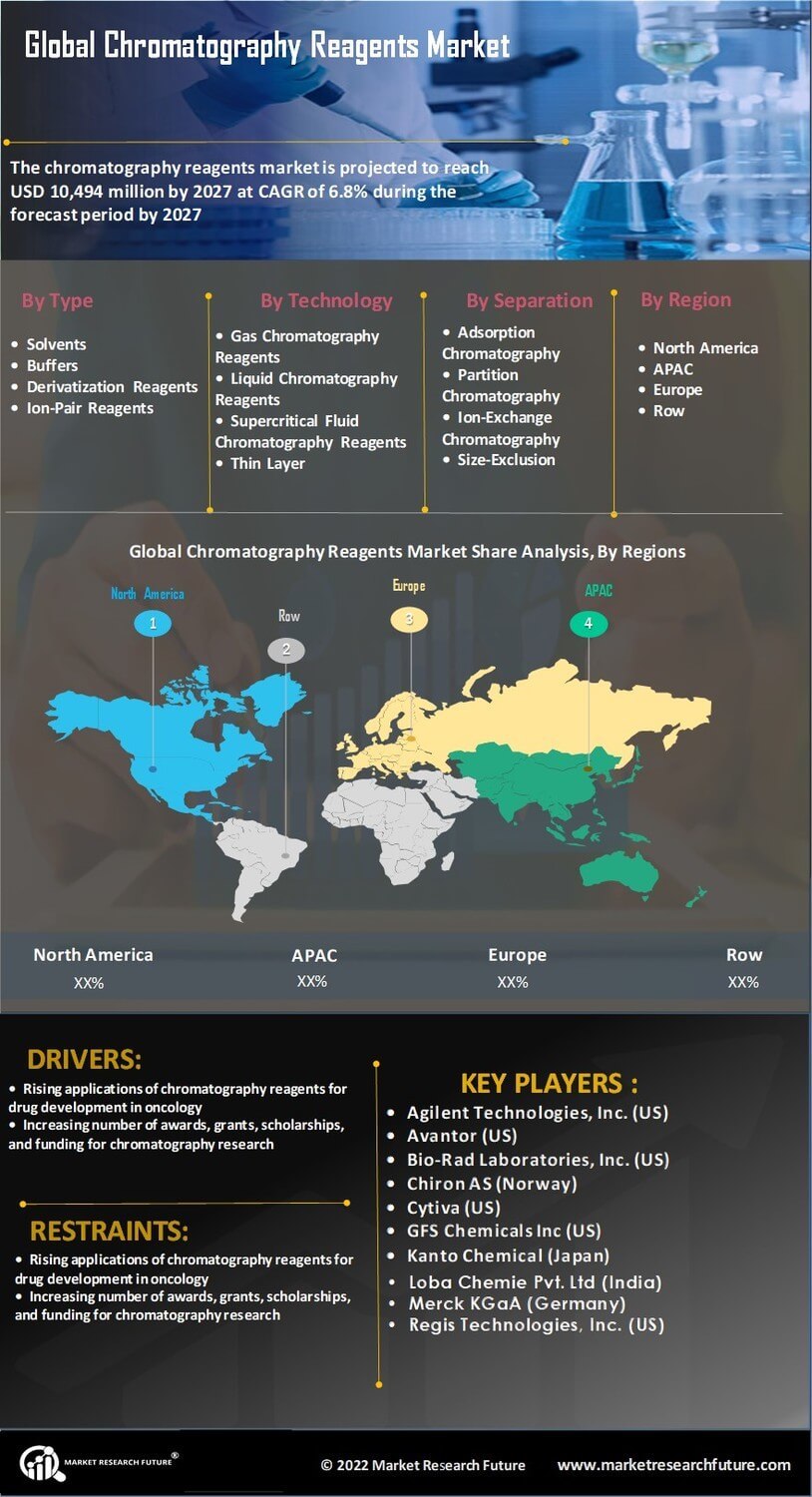The Chromatography Reagents Market is currently characterized by a dynamic competitive landscape, driven by innovation, strategic partnerships, and a focus on sustainability. Key players such as Thermo Fisher Scientific (US), Agilent Technologies (US), and Merck KGaA (DE) are actively shaping the market through their operational strategies. For instance, Thermo Fisher Scientific (US) emphasizes innovation in product development, particularly in high-performance liquid chromatography (HPLC) reagents, which positions them as a leader in advanced analytical solutions. Meanwhile, Agilent Technologies (US) focuses on expanding its global footprint through strategic acquisitions and partnerships, enhancing its capabilities in chromatography and mass spectrometry. Merck KGaA (DE) is also notable for its commitment to sustainability, integrating eco-friendly practices into its manufacturing processes, which resonates well with the growing demand for environmentally responsible products.
The business tactics employed by these companies reflect a concerted effort to optimize supply chains and localize manufacturing. The market structure appears moderately fragmented, with several players vying for market share while also collaborating on various initiatives. This competitive environment is influenced by the collective actions of these key players, who are increasingly leveraging technology to enhance operational efficiency and customer engagement.
In November 2025, Waters Corporation (US) announced the launch of a new line of chromatography reagents designed specifically for biopharmaceutical applications. This strategic move is significant as it not only expands Waters' product portfolio but also addresses the growing demand for specialized reagents in the biopharma sector, potentially increasing their market share in this lucrative segment. The introduction of these reagents is expected to enhance the efficiency and accuracy of biopharmaceutical analyses, thereby solidifying Waters' position as a key player in the market.
In October 2025, Bio-Rad Laboratories (US) unveiled a new digital platform aimed at streamlining the chromatography workflow for researchers. This initiative highlights the company's focus on digital transformation, which is increasingly vital in the current market landscape. By providing researchers with advanced tools for data analysis and reagent management, Bio-Rad is likely to enhance customer satisfaction and loyalty, positioning itself favorably against competitors.
In September 2025, Agilent Technologies (US) entered into a strategic partnership with a leading biotechnology firm to co-develop next-generation chromatography solutions. This collaboration underscores Agilent's commitment to innovation and its proactive approach to addressing the evolving needs of the market. By aligning with a biotechnology leader, Agilent is poised to leverage shared expertise and resources, potentially accelerating the development of cutting-edge chromatography technologies.
As of December 2025, the competitive trends in the Chromatography Reagents Market are increasingly defined by digitalization, sustainability, and the integration of artificial intelligence (AI) into analytical processes. Strategic alliances are becoming more prevalent, as companies recognize the value of collaboration in driving innovation and enhancing product offerings. The competitive differentiation is likely to evolve from traditional price-based strategies to a focus on technological advancements, reliability in supply chains, and the ability to meet sustainability goals. This shift indicates a transformative phase in the market, where innovation and strategic partnerships will play a crucial role in shaping future competitive dynamics.

















Leave a Comment